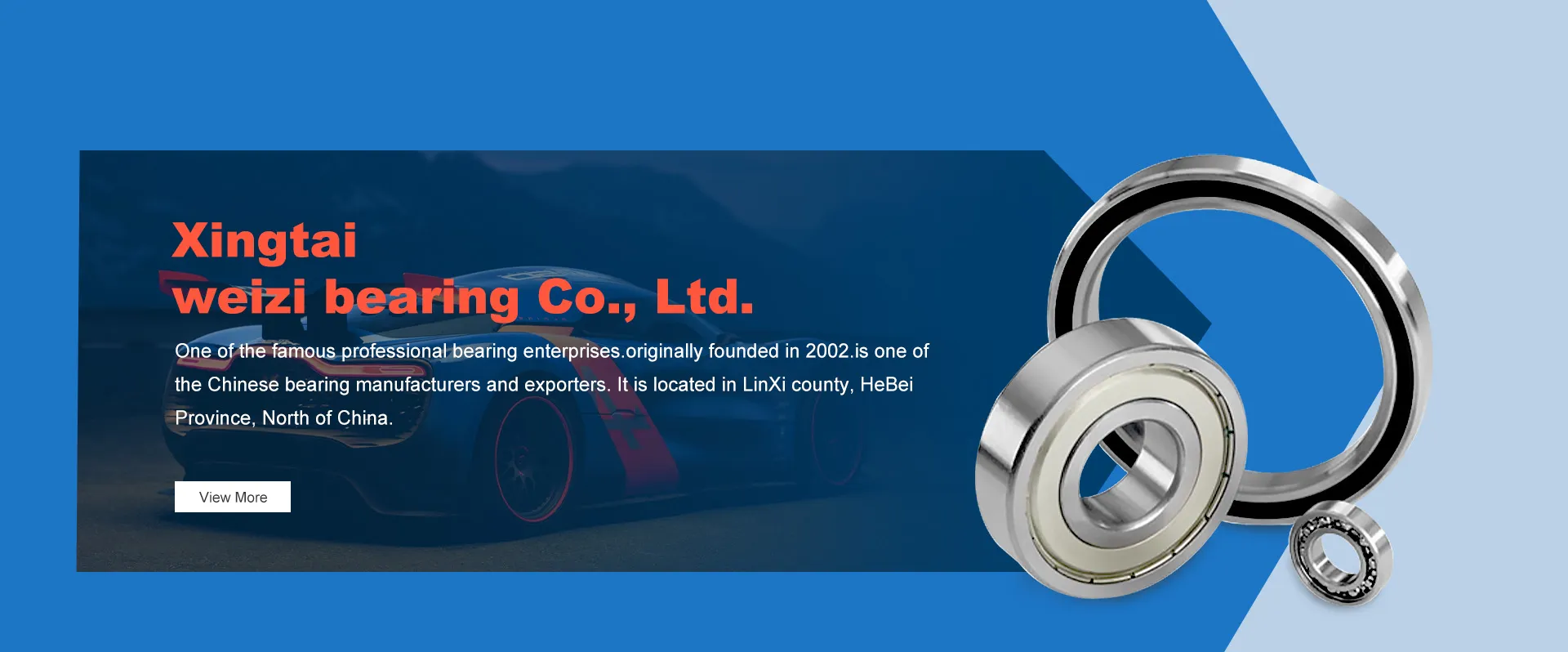
Nov . 13, 2024 15:45 Back to list
select a single row deep groove ball bearing
Selecting a Single Row Deep Groove Ball Bearing A Comprehensive Guide
When it comes to mechanical applications, bearings play a crucial role in ensuring smooth operation and longevity of machinery. Among various types of bearings, single row deep groove ball bearings are one of the most commonly used, owing to their versatility and reliability. This article aims to provide detailed insights into selecting the right single row deep groove ball bearing for your specific application.
Understanding Deep Groove Ball Bearings
Single row deep groove ball bearings consist of an inner ring, an outer ring, and a set of balls that are positioned between the two rings. The design allows for the balls to roll smoothly, enabling them to handle both radial and axial loads in either direction. Their robust design makes them suitable for a wide range of applications, from electric motors to automotive components.
Key Factors to Consider
1. Load Capacity The load capacity of a bearing is its ability to support varying weights and forces. When selecting a deep groove ball bearing, it's crucial to assess both static and dynamic load capacities. The static load capacity refers to the maximum load the bearing can withstand without permanent deformation, while the dynamic load capacity indicates the maximum load the bearing can handle during operation without failure.
2. Speed Rating Each bearing has a maximum operating speed, often referred to as the speed rating. It is essential to ensure that the selected bearing can operate efficiently at the speeds required by your application. Exceeding the speed rating can lead to accelerated wear, heat generation, and eventual failure.
3. Material Bearings are typically made of several materials, including steel, ceramic, and plastic. Steel bearings are the most common due to their strength and durability. However, for applications that require resistance to corrosion or high temperatures, stainless steel or ceramic bearings may be more appropriate. Selecting the right material is crucial for operational efficiency and longevity.
select a single row deep groove ball bearing

4. Lubrication Proper lubrication is key to the performance and lifespan of bearings. There are various lubrication options available, including grease and oil. Grease is often preferred for its simplicity and longevity, while oil provides better cooling and is suitable for high-speed applications. Consider the environmental conditions and operational requirements when choosing lubrication.
5. Clearance and Fit The bearing's internal clearance affects its performance. Depending on the specific application, you may need a bearing with tighter or looser clearance. Proper fit within the housing and shaft is essential for reducing wear and ensuring smooth operation.
6. Seal and Shield Options To protect the bearing from contamination and to retain lubrication, sealed or shielded bearings are available. Seals provide better protection against dirt and moisture but may create additional friction. Shields offer less protection but allow for higher speeds. Consider the operating conditions to choose the appropriate option.
Application-Specific Needs
When selecting a single row deep groove ball bearing, it's essential to consider the specific requirements of your application. For example, in high-speed environments, it may be critical to choose a bearing with minimal friction and optimal lubrication. Conversely, in heavy-load applications, a bearing with a higher load capacity might be necessary.
Conclusion
Choosing the right single row deep groove ball bearing requires careful consideration of various factors, including load capacity, speed rating, material, lubrication, clearance, and seal options. By understanding the specific needs of your application and evaluating these factors, you can ensure that you select a bearing that will enhance performance, increase efficiency, and ultimately contribute to the longevity of the machinery.
In summary, whether you are in the industrial sector or involved in DIY projects, taking the time to select the appropriate deep groove ball bearing will pay off in performance and reliability. With the right knowledge and careful assessment, you can make a well-informed decision that meets your operational needs.
Latest news
-
Premium Deep Groove Ball Bearings | High Speed & Reliability
NewsAug.29,2025
-
Durable Scaffolding Clamps - Secure & Reliable Tube Connectors
NewsAug.28,2025
-
Common Failures in Thrust Ball Bearings and Solutions
NewsAug.22,2025
-
How Tapered Roller Bearings Can Take Shock Loads
NewsAug.22,2025
-
Angular Bearings in High-Precision Spindles
NewsAug.22,2025
-
The Impact of Misalignment on Cylindrical Roller Bearing Performance
NewsAug.22,2025
